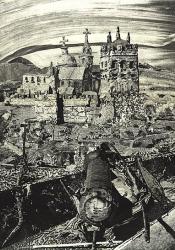Cerignola
Cerignola is town and comune of Apulia, Italy. In the Middle Ages it was part of the Kingdom of Naples. In 1503 the Spanish defeated the French at the battle of Cerignola, the first battle whose outcome was determined by gunpowder. The town was passed from hand to hand over the years. In 1731 it had to be rebuilt after an earthquake.
“Cerignola.” Wikipedia, Wikimedia Foundation, 22 Jan. 2019, en.wikipedia.org/wiki/Cerignola.
Parent Map
Coordinates
Latitude: 41.265615700000
Longitude: 15.893642900000
Longitude: 15.893642900000


